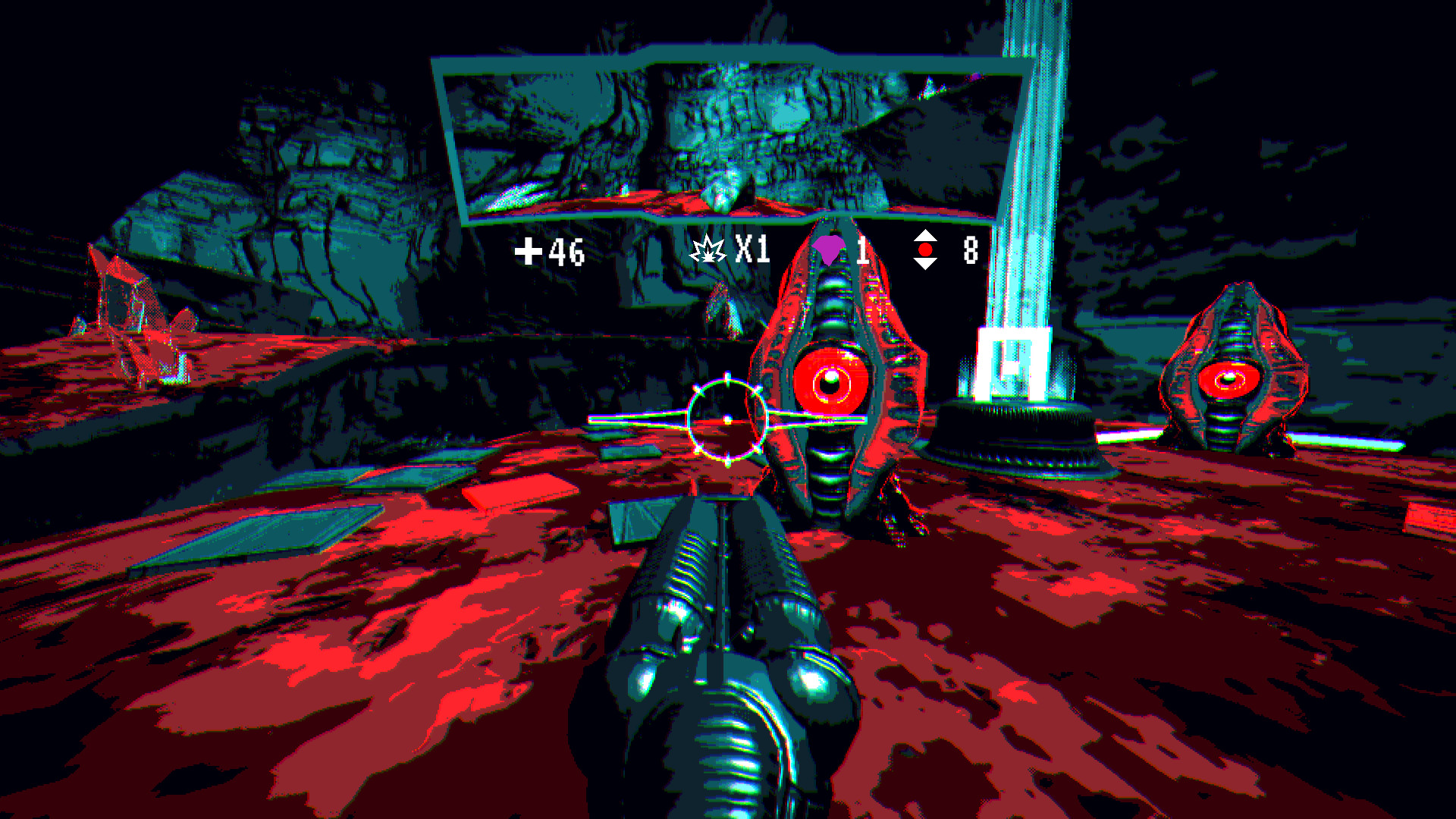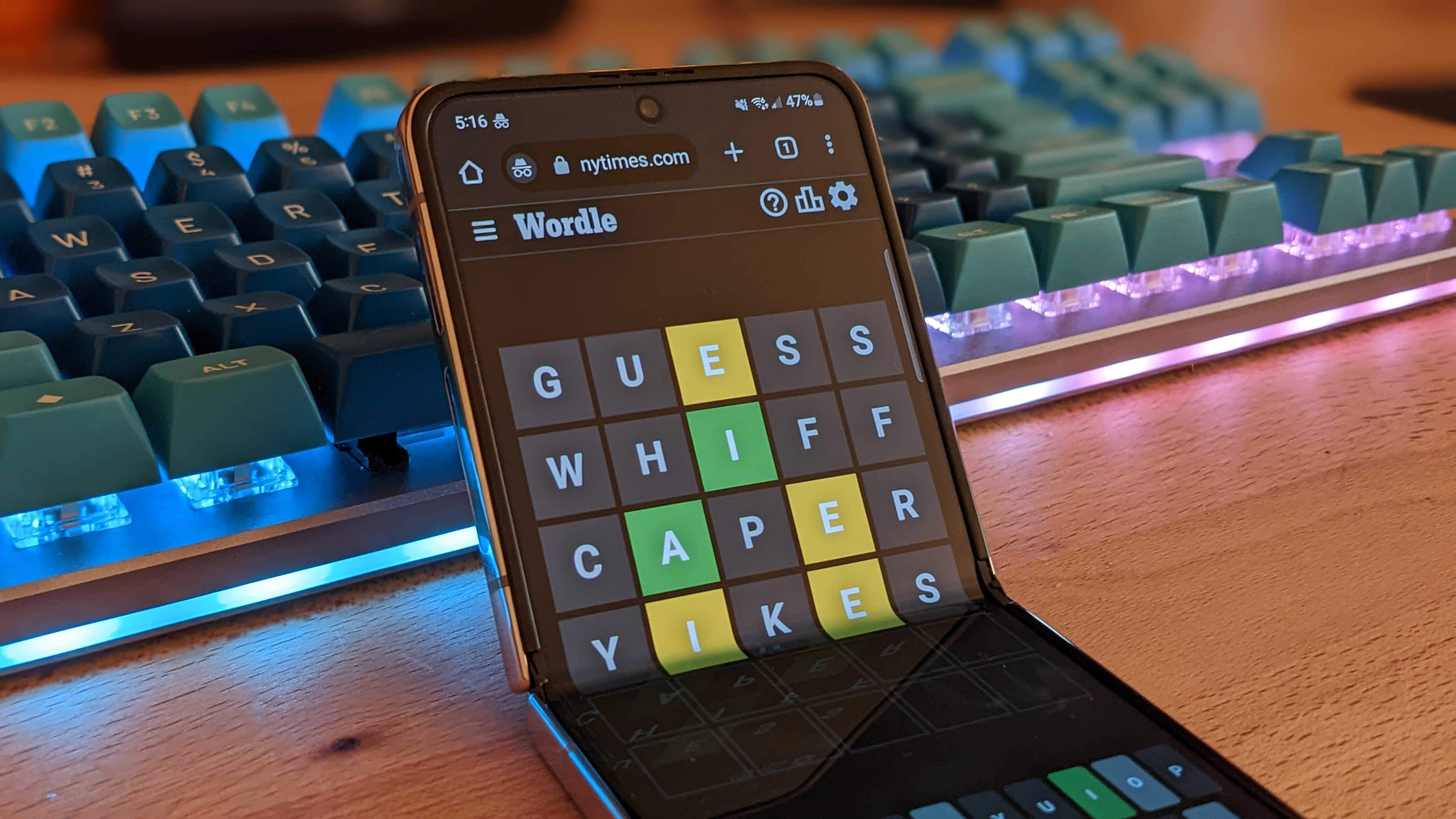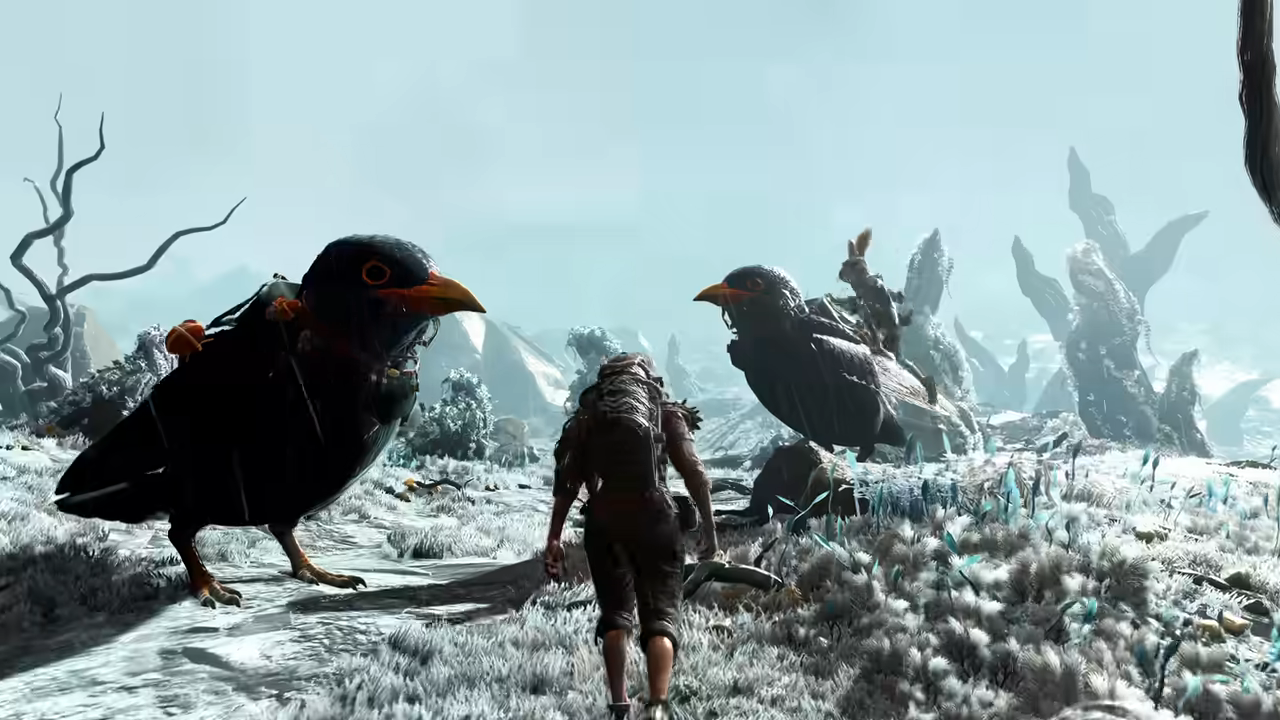
Shooting backward to propel the FPS forward in Hellscreen's first episode.
When I first read the words “FPS with a rearview mirror,” I figured it was just a neat trick: a game having some yuks with old rendering tricks like the mirrors in Deus Ex or Mario 64, with the real meat and potatoes of the shooter still having to carry the day. Playing Hellscreen’s demo a few months ago, I immediately put those thoughts to bed—this isn’t a gimmick, it’s the essential mechanic of this new retro shooter. Hellscreen’s just-released first episode, meanwhile, proves that rearview shooting isn’t the only trick solo developer Jamie D has up his sleeve.
(Image credit: Jamie D)
First off, let’s go over how this titular Hellscreen (hell mirror?) works. You have a mini, lower-res screen in the upper quadrant of your view at all times, and can blow it up and shrink it back down with the shift key. Left click fires forward, while right click fires backwards and does quadruple damage while you’re in motion.
This encouraged me to primarily play in “strafing runs,” zooming past enemies while aiming behind as I went. It lends Hellscreen a rhythm all its own, and the game also makes some enemies and secrets only visible in the second screen. There are even areas where your main view is occluded and you can only navigate in reverse. My one complaint is that some of the art plays havoc with the second screen’s low resolution—the mine level in particular has these bright white floors that give off a blinding, Xbox 360-style bloom in the mirror that makes it impossible to aim.
The levels are top notch though—I think it’s an achievement that Hellscreen’s main gimmick could stand on its own with weaker level design, while its maps and innovative progression could in turn carry a less interesting shooter. Together they’re a must-play experience.
Progression through Hellscreen is gated by collectibles—little soul orbs awarded on level completion and hidden throughout the maps—in a way that reminds me most of old school 3D platformers like Mario 64 or Spyro. Hellscreen introduces a light bit of Metroidvania backtracking as well, with certain weapons destroying environmental obstacles and opening new paths through earlier missions. Further, there are these ghostly platforms scattered around, teasing you, that can only be made whole after flicking a later-game switch.
Pressing Tab at any time warps you to a gallery of portals to the different missions like an old 3D platformer hub. Pressing Tab again seamlessly drops you back into the action like you’d just unpaused the game, and the technical wizardry behind that and Hellscreen’s constant double-rendering of any given scene is seriously impressive. In addition to the wow factor, I found this quick loading encouraged me to duck in and out of maps when I got stuck or found a new tool that would open up a dead end from earlier, though I wish level-by-level progress for second-order collectibles (find six little purple guys to make one big red guy!) would persist between loads, encouraging even more backtracking and improvisation.
(Image credit: Jamie D)
(Image credit: Jamie D)
(Image credit: Jamie D)
(Image credit: Jamie D)
(Image credit: Jamie D)
It’s a unique setup for a shooter, and I was also surprised at just how far Hellscreen pushes its red and teal alien art style. My favorite is this short, early mission called “Fragmented” which sees you platforming around a giant, leafy plant in the middle of an otherwise-empty arena. I came in expecting Giger-esque hellscapes, and the game’s got those, but it’s really refreshing how much variety is here in the first episode alone.
Hellscreen really delivers in early access, and though it only took me two hours to reach its final level, I’m pretty sure I found less than half its collectibles, and episodic shooters are one of the best fits for an early access model—this isn’t an RPG or a survival game where you’ll log on in half a year to find an entirely different early game. You can just pick up where you left off in episode two, as I’ll be doing. Hellscreen is $17.99/£14.99 on Steam.



